If you’re using an Android device, there are plenty of options out there for you to choose from. I’ve been happily rocking the Nexus 5 for over a year, and it’s done everything I need it to do in a mobile device just fine. That is until I got my hands on a Note 4. I’m not a fan of “gimmicks” and pre-installed software, but I have to admit this phone delivers and then some. Read on for my Samsung Galaxy Note 4 review!
Specs
The Samsung Galaxy Note 4 boasts some impressive specifications:
- 5.7″ Quad HD Super AMOLED (2560×1440)
- 2.7 GHz Quad Core
- 3GB RAM, 32GB Internal Memory
- Rear Camera 16M+ Smart OIS
- Front Camera 3.7MP
- 3220 mAh Fast Charging battery
- Wi-Fi, NFC, Bluetooth 4.1, USB2.0, MHL 3.0, IR LED
- S Pen
- gesture, accelerometer, geo-magnetic, gyroscope, RGB ambient light, proximity, barometer, hall sensor, finger scanner, UV, HRM sensors
- microSD card support up to 128GB
- Android 4.4.4
Design/Hardware
Like the Samsung Chromebook 2 I reviewed the other week, the Galaxy Note 4 features a faux leather back, and in this case not only does it look good, but it feels great to hold as well. The black aluminum edge has a nice shaved edge along the top or bottom exposing the silver aluminum which adds a classy look to the phone. I was a bit surprised by not only how light the phone felt for a phablet, but also at how thin the phone was.
The power button on the right side is a bit lower than other phones, but it makes sense as you can still hold the Note 4 in one hand and access the power button. I found that with the volume buttons on the left side I was having to slide the phone down in my hand a bit before I could access them when using the Note 4 with one hand. That being said, for a 5.7″ screen, the Note 4 didn’t feel unwieldy and was quite comfortable to hold.
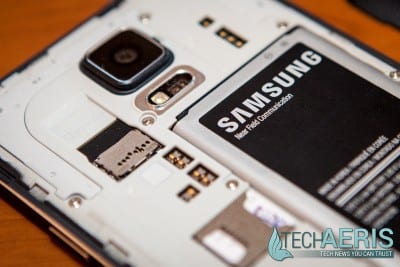
As with most Samsung devices, the back of the phone is removable which allows access to the microSIM card slot, as well as a removable battery and slot for microSD cards for extra storage.
The Galaxy series still has a hardware home button, and the back and menu buttons are soft buttons to the left and right. Personally I don’t mind the hardware home button, it does reduce the amount of usable screen space for sure but it’s minor in my opinion. I also found that with games and some apps going full screen these days, it was easier to hit the home button than have to swipe the edge of the screen to bring up the soft buttons before being able to go to your home screen.
Another thing that stood out for me is the rounded edges of the glass on the screen, it’s a nice addition and when your finger slides onto or off of the edge of the phone it’s a really smooth transition. It really is one of those minor things but I thought it was worth mentioning.
Display
It’s been awhile since I used a Samsung product, and I forgot how vibrant the AMOLED screens are. The colors on the Note 4 are rich and bright, and it allows the screen content to be seen in just about any lighting condition. Like a lot of smartphones these days, you can set the brightness to auto and the Note 4 goes one further by allowing you to adjust the auto brightness between -5 and +5 using a slider in your notification menu.
A 5.7″ display is a pretty big display and one of the features Samsung has added to the Note 4 is allowing users to reduce screen size for one handed operation. When enabled, simple hold the device in one hand and swipe your thumb from right to left and back again. The screen then opens as a new floating window and is sized based on your thumb reach. This window can be manually resized, fully expanded back to full screen and includes on screen menu, home, back, and volume control buttons.
Software
I’m usually not a fan of pre-loaded software, OEM or carrier. The Galaxy Note 4 comes with not only OEM software and Google applications pre-installed, but a large number of useful for some, useless for others apps that cannot be uninstalled. These apps include: Dropbox, Evernote, Facebook, Facebook Messenger, Flipboard, Hancom Office 2014, Instagram, Flipboard, and WhatsApp. These apps can be disabled which restores them to their factory state and removes them from your app list, preventing them from being updated.

The Note 4 comes with Samsung’s TouchWiz interface over top of Android 4.4.4 KitKat. The Note 4 comes with two variations – TouchWiz and TouchWiz easy. TouchWiz has certainly improved since I last used it on a Galaxy SII LTE/Skyrocket, my only complaint with it is the far left screen is set to display a Flipboard screen. This was easily removed though, simply long press on any other home screen, select “Home screen settings”, and uncheck FlipBoard Briefing. TouchWiz easy simplifies your experience by giving you three home screens with larger icons. The far left lets you add up to 12 contacts for quick access, the main screen displays weather, clock, and S Planner along with Torch, Camera, Magnifier, Phone, Messages, and Internet, while the far right screen has larger icons for 7 apps with room to add 4 more. That being said, you aren’t stuck with TouchWiz anymore as you can easily download the Google Now Launcher from the Play Store to get a more stock Google launcher experience. The Google Now Launcher worked flawlessly with the Note 4.
As far as Samsung specific apps, the pre-installed S Health, S Note, S Planner, S Voice, and Scrapbook are pretty useful apps. I prefer Google’s stock calendar app but S Planner syncs just fine with your Google account. S Voice worked decently enough as well, I’m not a big “OK Google” user but both Google’s app and S Voice seem to be pretty close to on par with each other. S Note is a nifty app for not only keeping notes, but taking pictures and cutting out areas to insert into notes. S Health is a great app and really utilized some of the additional features of the phone. With S Health, you can get your heart rate, keep track of your daily step count, calculate your SpO2 (the amount of oxygen in your blood), as well as track your exercise, food consumption, weight, sleep patterns (if you utilize a third party device), and even calculate the UV index.
While a lot of Android users tout a preference for stock Android – and I am one of them – I came to appreciate some of Samsung’s additions over stock Android. Samsung has implemented multi-window multitasking on the Note series, and it is pretty effective. Not only can you stack two apps and use them both at the same time, a long press of the back button brings up a sidebar quick menu filled with apps that you can customize. Selecting one of these apps will open it up in a movable window overlaying whatever app you have open. Not all apps are compatible with being displayed in the multi-window or windowed overlay view, but most of the key apps are. If you wish, you can even overlay more than one app at a time.
As well, long pressing on the menu button brings up the recent apps, with an additional option to view them by usage and end them on a per app basis, as well as another option to end all the apps in the recent list instead of having to swipe them one by one.
The Note 4 also includes Quick Connect which allows you to cast video, photos for viewing or cast documents for printing. I tested the Quick Connect with my Xbox One and while it does work, it was quite slow to sync between the phone and the display on the Xbox.
Speakers
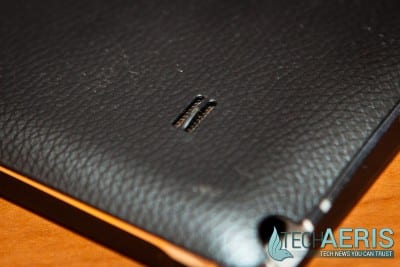
The speakers on the Note 4 are located on the back of the phone and visible through two small slits in the back plastic panel. The sound is decent for a phone, watching a movie I was able to hear the dialogue without having to raise and lower the volume through out, and while listening to music I could hear it clearly at a decent distance within the same room while working around the house.
Performance
With its 2.7 GHz Quad Core processor and 3GB of RAM, the Note 4 performed flawlessly with whatever I could throw at it. Apps launched quickly, and even when two apps were open at the same time in multi-window mode, both responded as if they were the only one opened. Of the few games I tested out, they all ran smoothly and looked great as well.
Cameras
The Note 4 includes Samsung’s Camera App which features numerous shooting modes from Auto to Panorama, selfie mode, Selective Focus, and more. Additional modes are available from the Galaxy App store as well. While these modes are specific and not everyone will use them all, there’s certainly plenty of variety and scenario specific modes available. The Camera app also has an HDR mode, and allows users to set exposure value, white balance, ISO, and more. The camera seemed to perform well when taking pictures inside or out, both launching the app and focusing was pretty fast. Photo quality was decent, but not outstanding, but on par with most other Android devices I’ve used in the past.

For those focused on selfies, Samsung has included regular and wide angle selfie modes for squeezing more of your friends into the picture when needed. As well, the heart sensor on the back of the phone is used to take the photo – simply place your finger on the sensor and pull it away to take the shot – which does make it easier to hold your phone while taking selfies.
For those wishing for a more stock camera, you can download the Google Camera app from the Play Store. The one thing I did notice however was the HDR feature was missing while using the Google Camera app on the Note 4.
Reception/Call Quality
While I don’t make or receive many calls these days, the reception and call quality on the Note 4 was clear and there were no complaints on either end of the call.
Battery Life
One would think that a larger screen device with higher processing speed would seriously affect battery life. I was able to get a normal day 8-9 hour day with roughly 2-3 hours of screen on time on a single charge. The Note 4 also includes a power saving and ultra power saving mode to further extend the battery life of the device. Power saving mode allows you to toggle three options: restricting background data, restricting performance, and switching to grayscale mode. If you’re not doing any processor intensive functions, enabling power saving mode will definitely give you a full day of use with no issues. Ultra power saving mode goes one step further and applies a simplified grayscale home screen theme and limiting the number of apps you can use. The apps it allows can be selected by the user, and the mode also turns off mobile data when the screen turns off and disables Wi-Fi and Bluetooth connectivity. I tested this mode one night just before I went to bed and when I woke up in the morning the device had dropped from 99% to 98% battery over a span of 8 hours.
While the normal battery life on the Note 4 is adequate for a day’s use, the extra power saving modes go a long way towards extending how long you can use the device between charges. The Note 4 also features fast charging which charges your phone up to 50% in about 30 minutes.
Ecosystem
Being an Android device, the Note 4 is tied into the Google Play Store eco-system, which according to reports recently surpassed Apple’s App Store for the most apps available. You can also install the Amazon App Store, but most of these are duplicated in Google’s Play Store.
Samsung also includes their Galaxy Apps library which features Galaxy Essentials and other apps which are tailored specifically for Galaxy devices – both from Samsung and third party developers. Some of these apps take advantage of the S Pen, adding even more functionality and value to the device.
Accessories
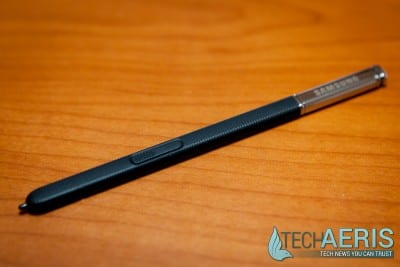
The plastic S Pen feels a bit cheap, I’m sure if you applied enough pressure on it you’d easily snap it, and it has a metal cap on it – the tip is plastic as well. It’s comfortable to hold though and the button on the side is placed in pretty much the right spot for easy thumb click action. Oh, and don’t worry about forgetting the S Pen somewhere, the Note 4 warns you if it doesn’t detect the S Pen within range of the phone. Removing the S Pen from the Note 4 or using the S Pen button brings up a menu allowing you to create a memo, smart select a portion of your screen, clip an image, or write on your screen. You can also write text in just about any text input box on almost any application, and I was really impressed with the handwriting to text recognition. Even when I was intentionally trying to write messily, the translated text from my scrawling was almost always accurate.
You shouldn’t have any issue finding a suitable case for your Note 4 either, a quick search on Amazon returns literally hundreds of possibilities.
Price/Value
The Samsung Galaxy Note 4 is note cheap by any means. Depending where you live, devices of this size and category could cost you upwards of $300 on contract, or around $750-$800 off contract. For the features that it adds, and the inclusion of the S Pen for even more functionality, the Note 4 definitely offers more value than most of the other devices in this price range which is still on the pricey side for a device that will last you two years at most.
Wrap Up
I’ve used Samsung devices in the past, and while generally impressed with the hardware, I was less than impressed by TouchWiz and fairly quickly rooted and installed custom ROMs like CM or AOKP. The Samsung Galaxy Note 4 really impressed me both with the hardware and S Pen functionality, and even TouchWiz has improved enough that I didn’t mind running with it. Given that the Google Now Launcher is also available (not to mention other launchers), love or hate TouchWiz, there are other options for you to use with the Note 4. All in all, the Note 4 is a solid device with extra functionality and added features that you won’t find on other devices, and that are actually useful. I spent just under two weeks with this device and I still feel like I haven’t even fully realized its potential. If you’re in the market for a phablet sized smartphone, the Note 4 should be near – if not at – the top of your consideration list.
[rwp-review id=”0″]*We were sent a demo unit of the Samsung Galaxy Note 4 for the purposes of this review
Last Updated on November 27, 2018.


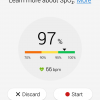
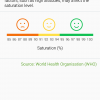
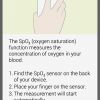
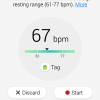
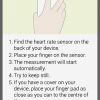
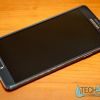





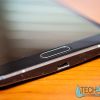
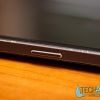

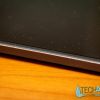
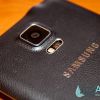
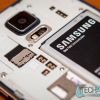
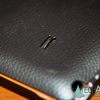
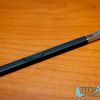
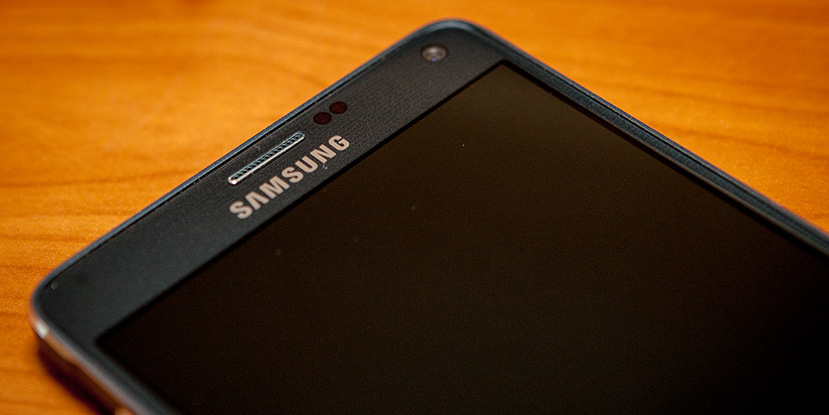









Comments are closed.